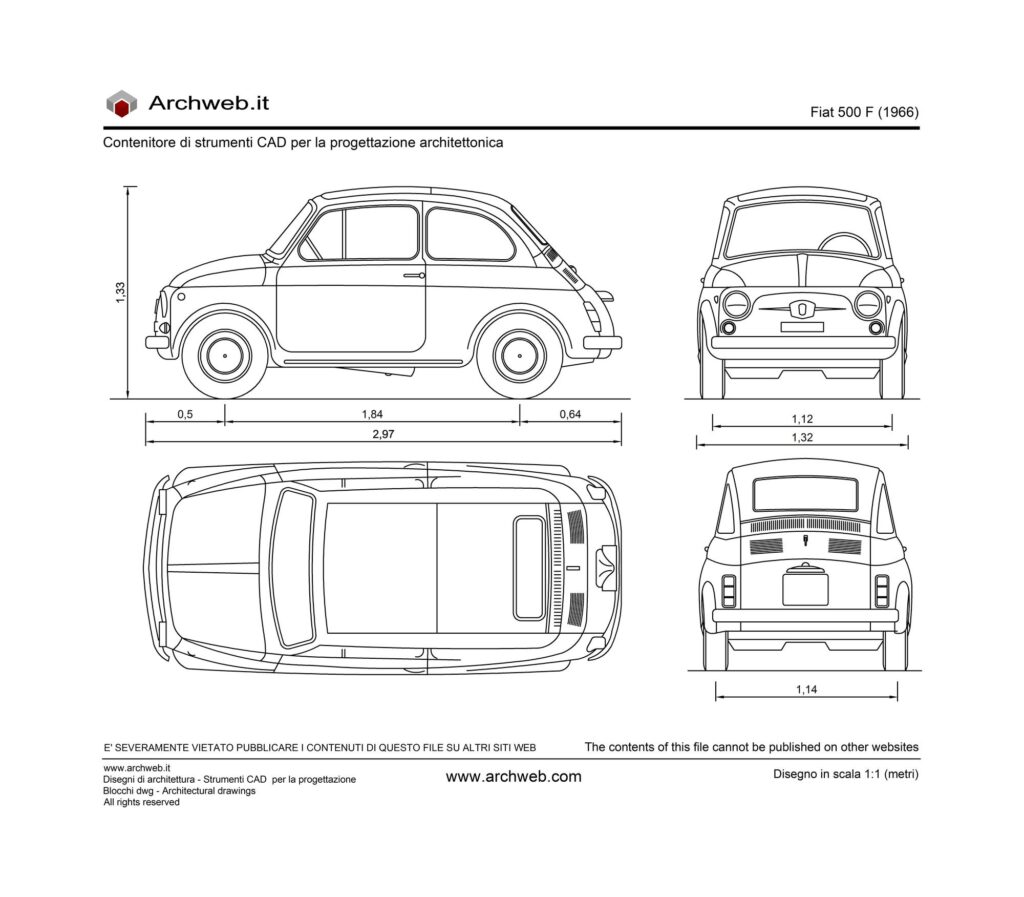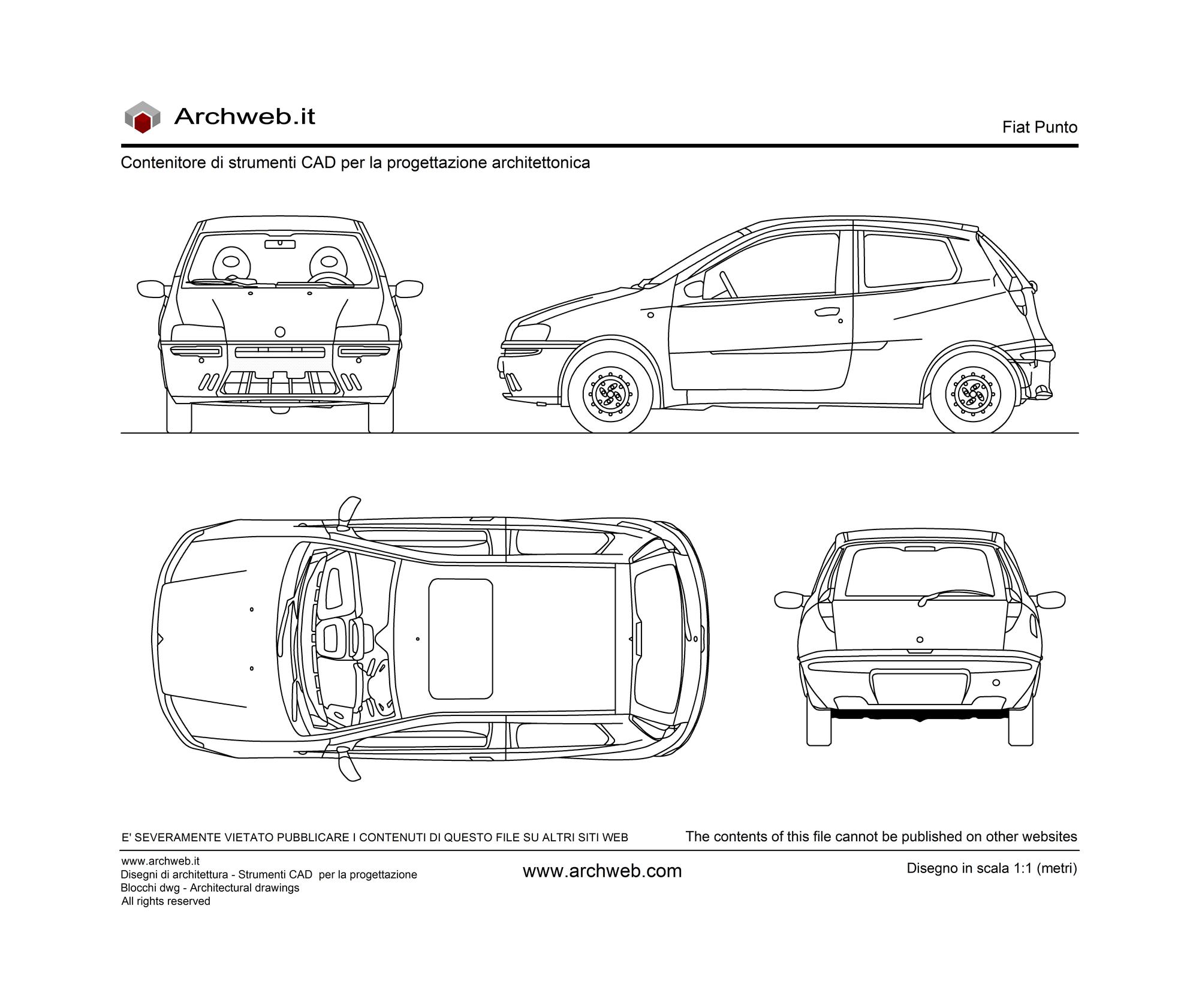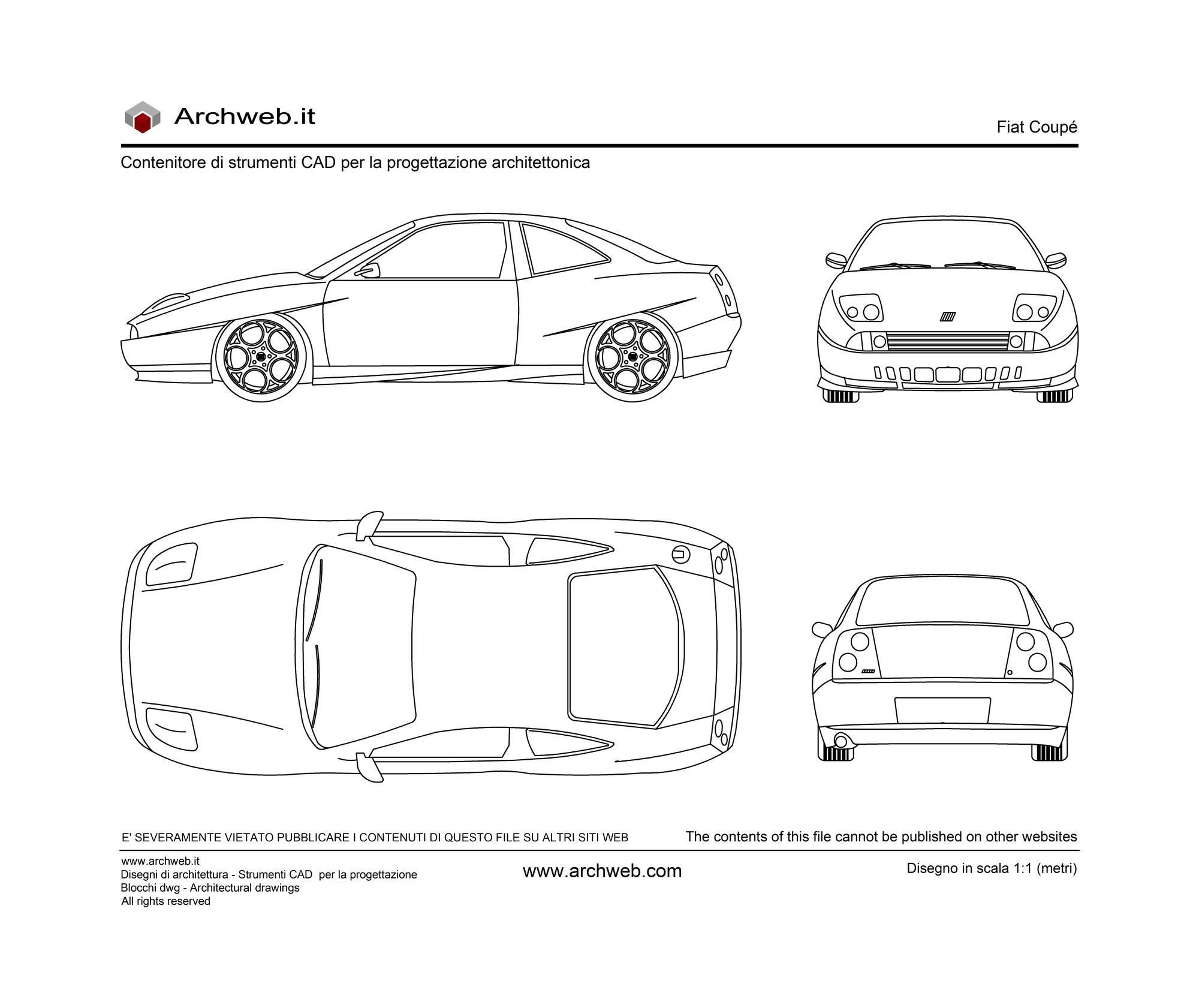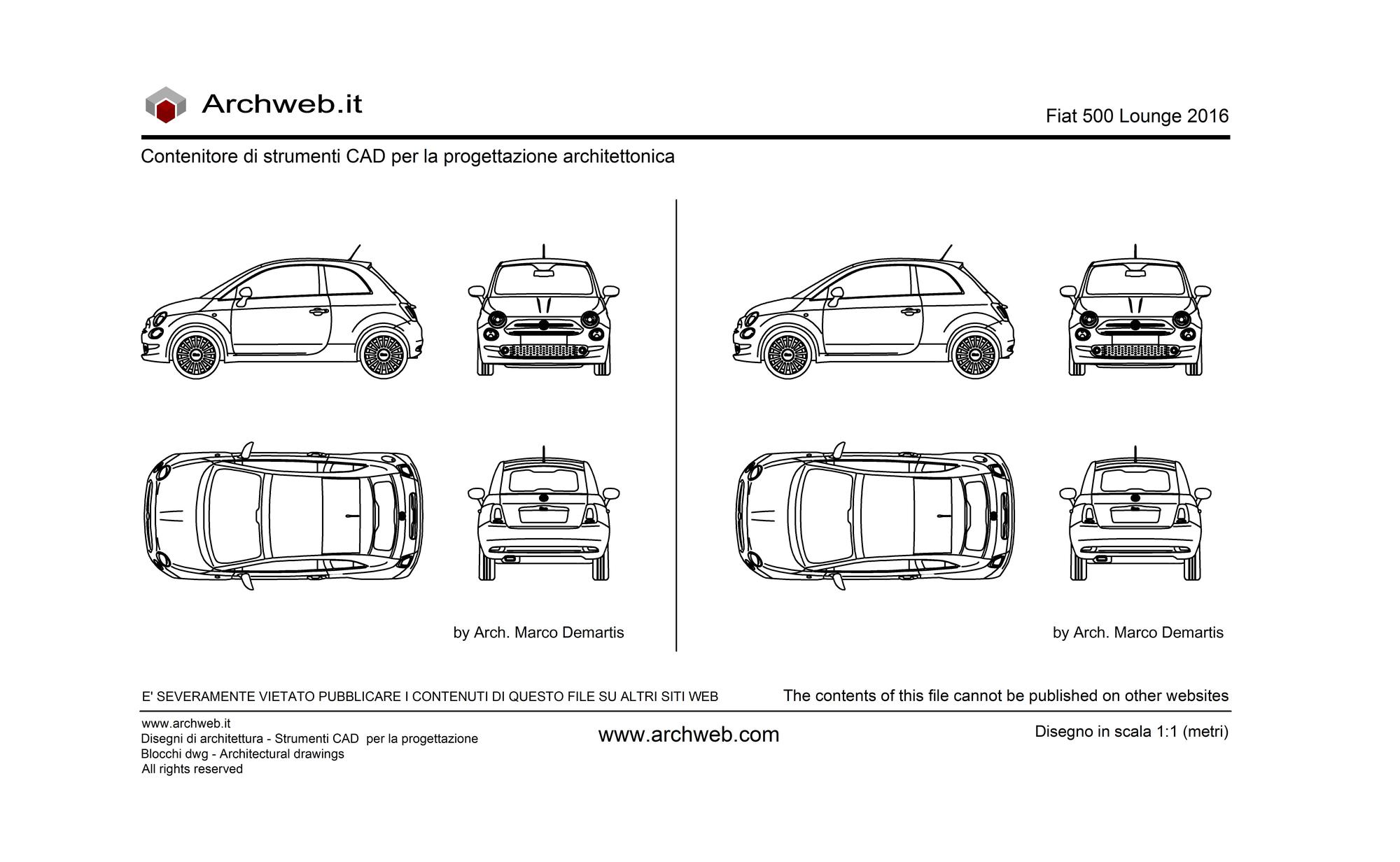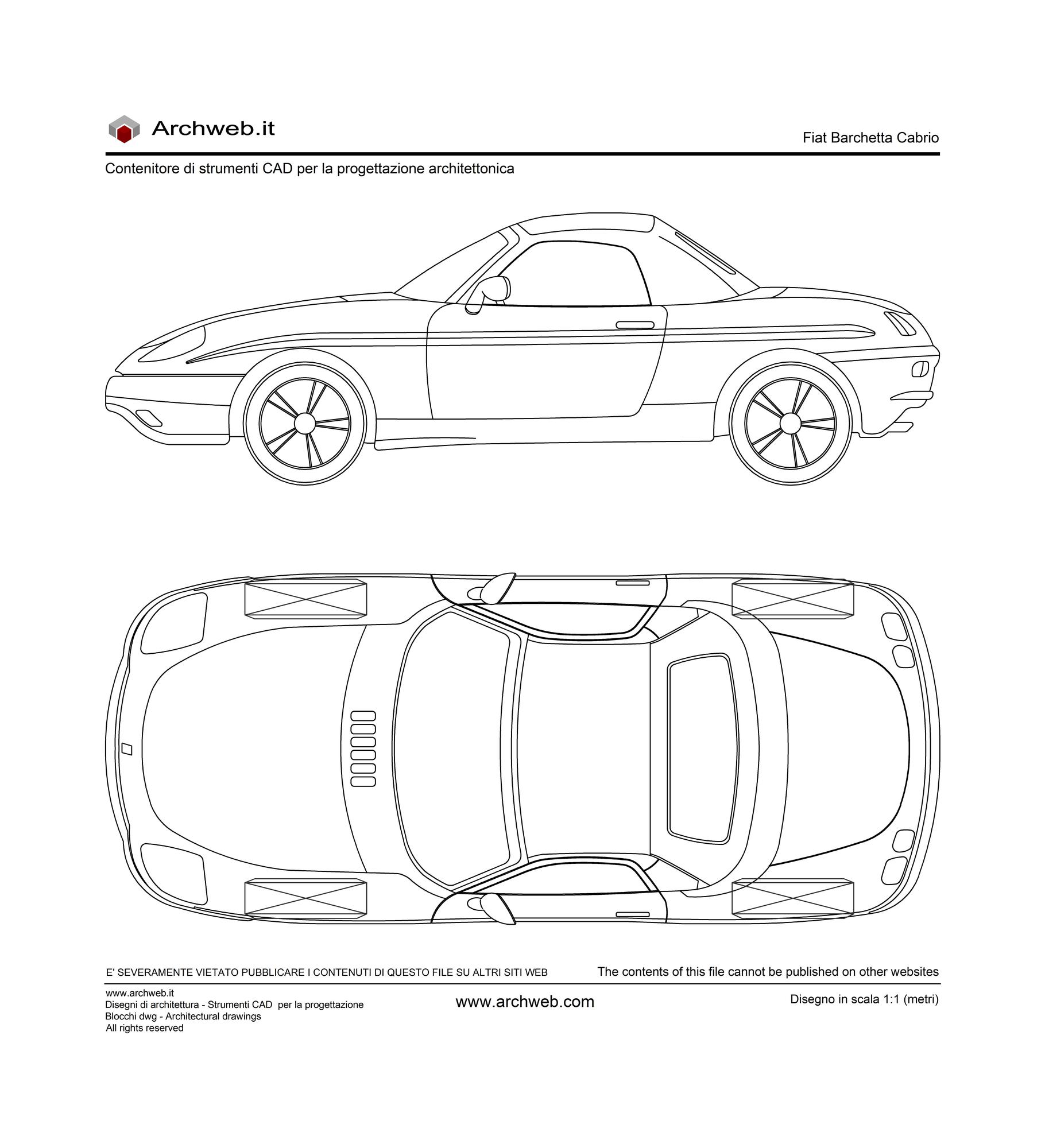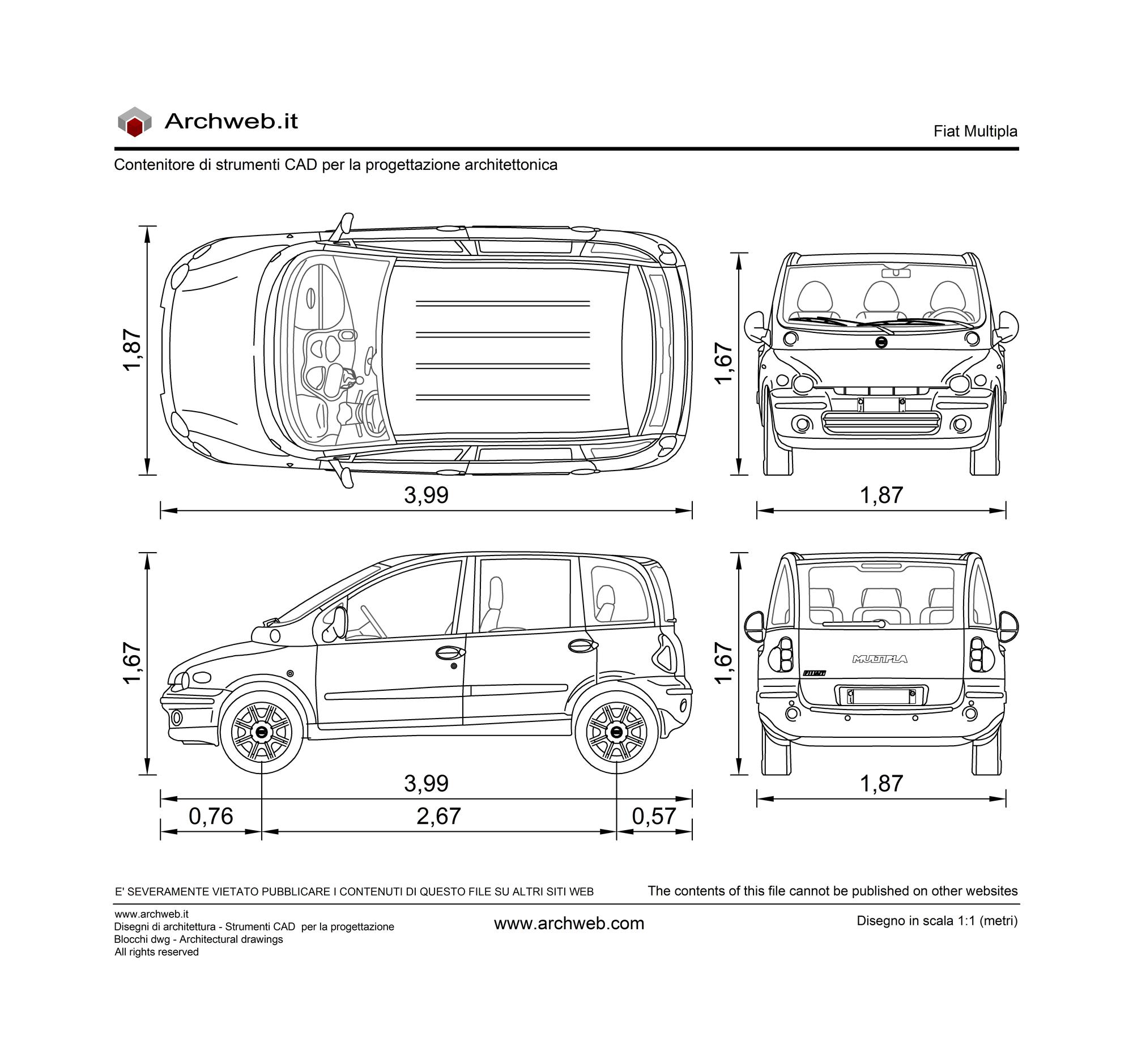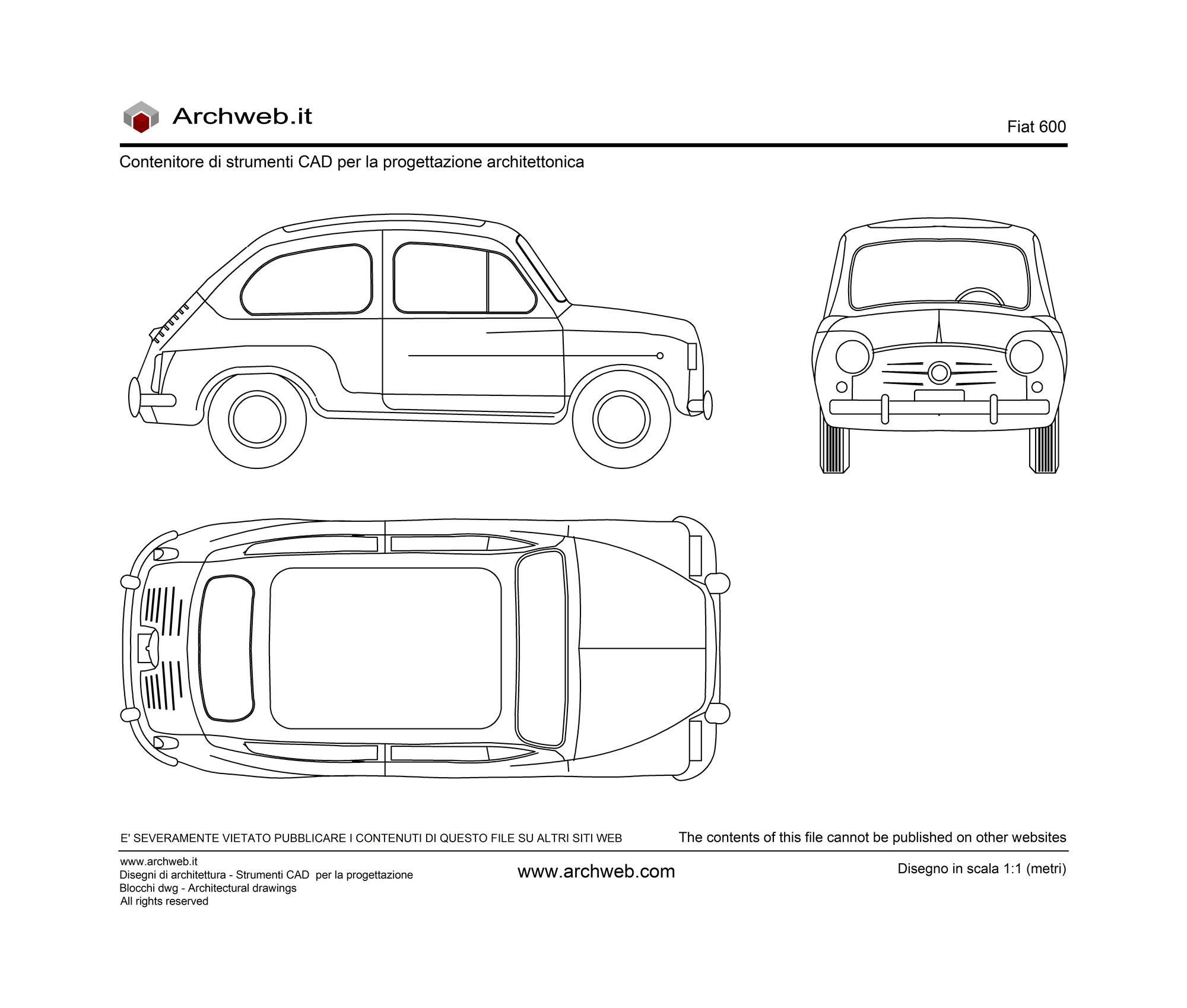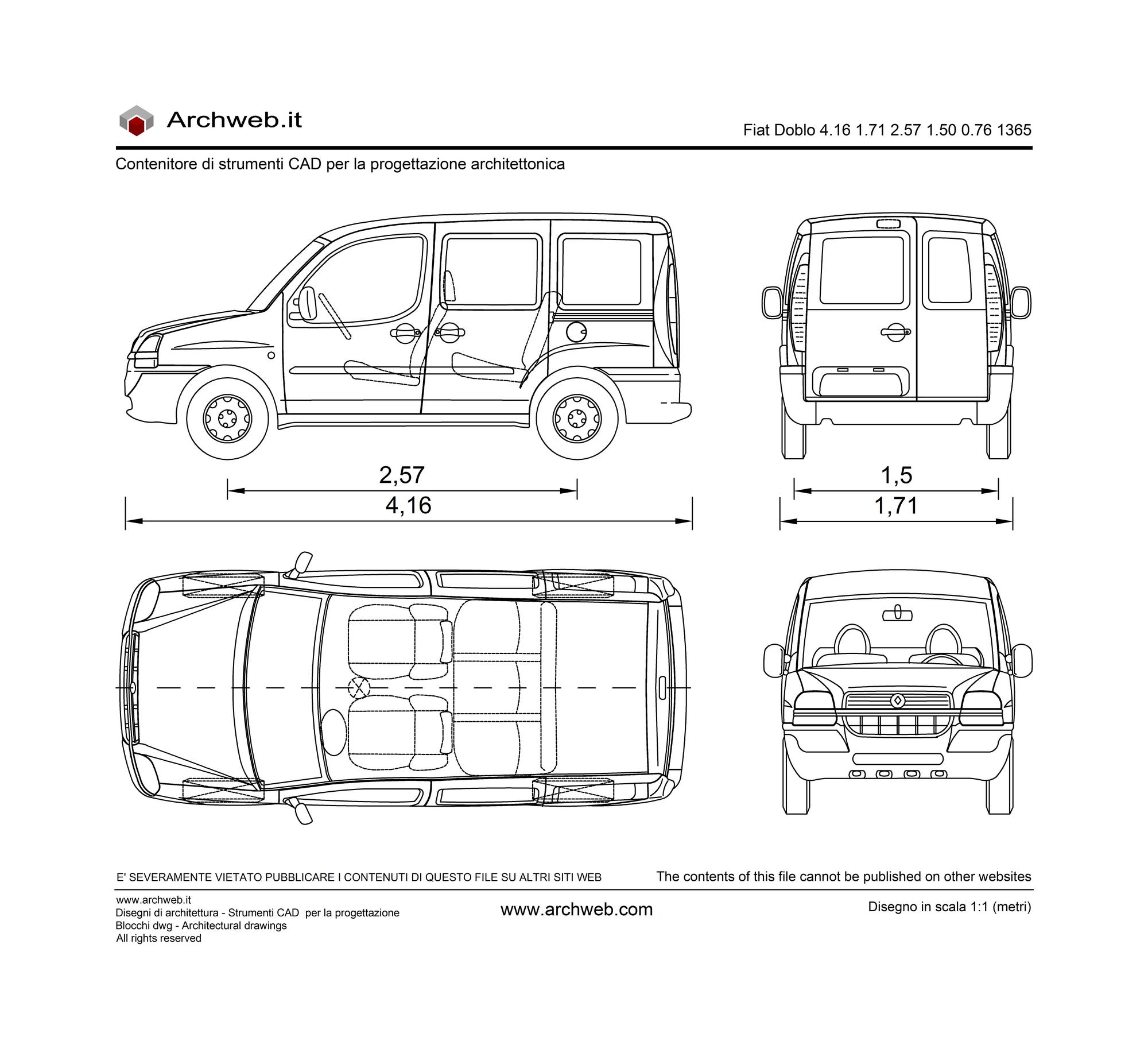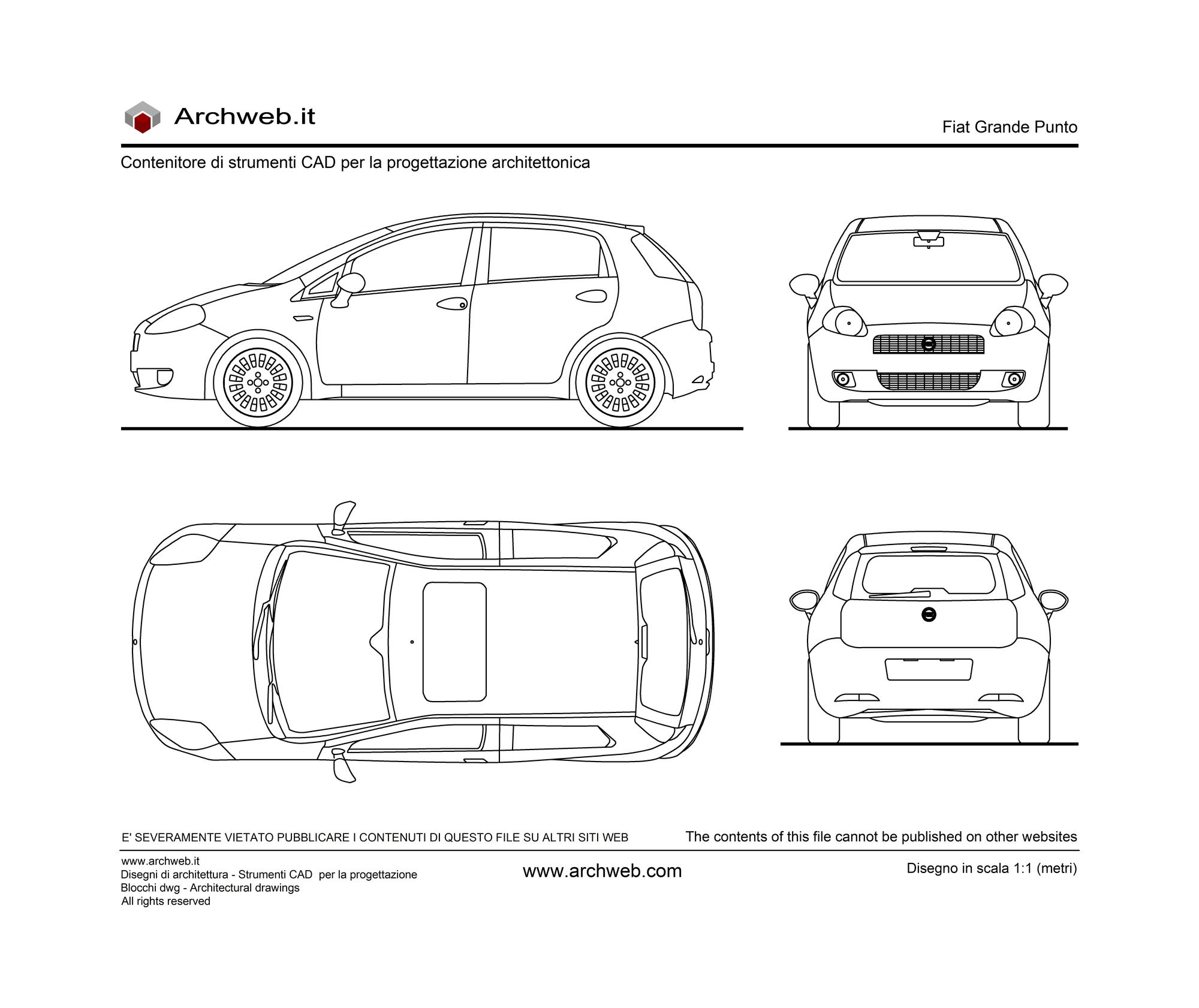Subscription
Fiat 500 F
1:100 Scale dwg file (meters)
The FIAT 500 also known by the popular name Cinquino
A brief history of the 500
The new 500 was born in 1957 and the adjective new meant a totally new design concept. Equipped with a forced-air-cooled engine, it was also revolutionary because Fiat undertook to solve typical defects of the cars of the time such as noise, high oil consumption, oil leaks to the outside. With the adoption of an exuberant cooling system for the cylinder head and the oil pan, Fiat created a silent engine, with very high resistance to the most severe operating conditions.
The engine displacement of only 479cc was 16.5Cv, and for the Sport version 21Cv. The maximum speeds were 95 and 105km / h respectively.
The project curated by Eng. Dante Giacosa, was awarded with the “1959 Compasso d’Oro prize”. This success gave impetus to the production of the 1960 model 500d, which subsequently led to the production of the SW version called Giardiniera, which adopted an innovative engine solution: the sole.
In 1964 the 500d was the best-selling Italian car, and starting from the following year, it underwent a series of changes to the bodywork and mechanics, mainly consisting of the front hinged doors, the new clutch, and the strengthening of the transmission components. Further technical refinements led to the production of the 500L, and in 1972 to the last edition of the 500, the R, equipped with a larger displacement engine and some technical improvements.
The “500 F”
The side of a 1966 FIAT Nuova 500 F, showing the aesthetic changes and simplifications compared to the previous model D: door hinges against the wind; absent aluminum moldings; new external push-button handles; higher and wider windshield; rear roof integrated into the roof mold. The chrome molures remain under the doors and the old design cups, even if in steel and no longer in polished aluminum.
In 1965 the New 500 F was presented, heir to the “D”, destined to become the version with the greatest number of units built over the years. The novelties are above all aesthetic: the most evident is the inversion in the opening of the doors, hinged with 8 screws per door, hence the term “eight bolts” that distinguishes the first Fs from March 1965 approximately until November 1965 or with the chassis number slightly over a million (this version is now highly sought after due to a production that lasted “only” 10 months) where the classic hinging with 4 screws per door will then pass.
This change, in 1965, was due to the Highway Code which imposed the hinging of the front doors for all models, for greater safety. FIAT therefore also adapted the 500 sedan, but not the Giardiniera, which kept the opening unchanged for all production (until 1977), as the Code provided for an exemption for commercial vehicles. Although there are no official data, presumably from December ’65 Fiat abandons the 8-bolt hinge configuration and switches to the standard 4-bolt one, which from now on will remain unchanged until the last Fiat 500 produced. In these first series of the F model, indicatively up to January ’66, Fiat pours on this new model parts and components originally intended for the previous version D, now out of production. This happens to bring to exhaustion the component stocks of the D still present in the warehouse.
It is also the beginning of the era of plastic, which replaces numerous sheet metal and metal parts.
The bodywork is revised much more than it seems due to the reversal of the doors alone. In practice, only the bonnet and the front of the 500 D body remain.
Read the full story on Wikipedia … >>
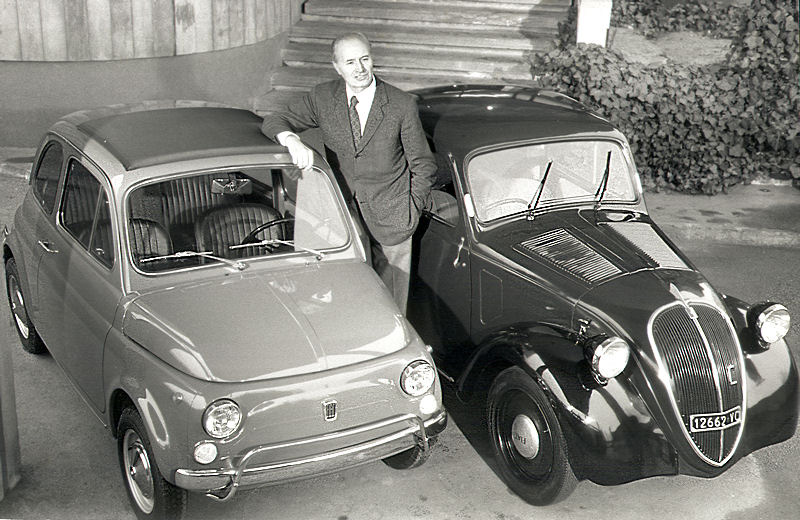
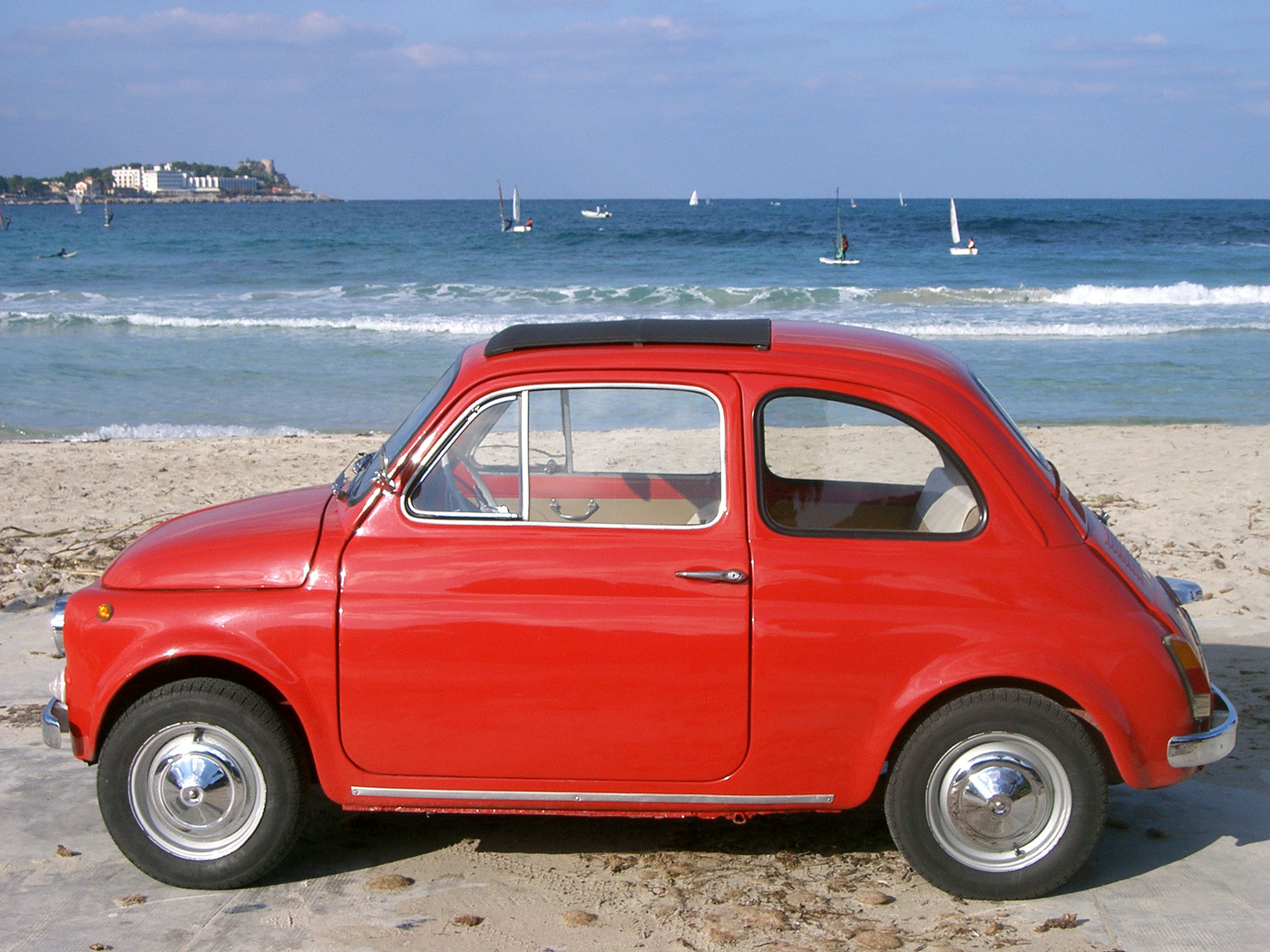
Dante Giacosa between the “Topolino” and the “Nuova 500” (in the “L” version) on the right the side of a 1966 FIAT Nuova 500 F
Recommended CAD blocks
DWG
DWG
DWG
DWG
DWG
DWG
How the download works?
To download files from Archweb.com there are 4 types of downloads, identified by 4 different colors. Discover the subscriptions
Free
for all
Free
for Archweb users
Subscription
for Premium users
Single purchase
pay 1 and download 1


























































